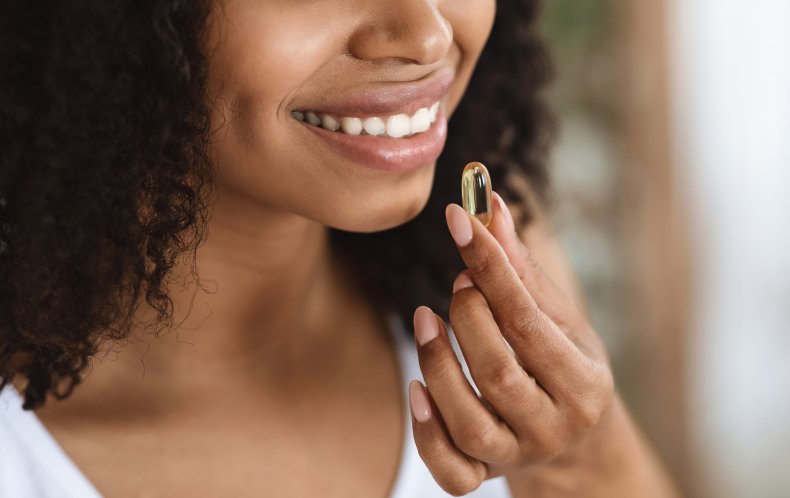Vitamin D: What Are the Health Benefits and Signs of Deficiency?
For individuals looking to take control of their health, using vitamins and supplements can be an easy way to boost well-being.
In recent years, vitamin D has started gaining more attention for its health benefits but despite its name, it's actually a prohormone.
While in general vitamins are nutrients that the body cannot synthesize itself, vitamin D is an exception which our bodies produce in response to sun exposure.
What Are the Health Benefits of Vitamin D?
Vitamin D plays an important role in our bodies. It assists in keeping bones and teeth healthy, supporting the immune system, supporting lung and cardiovascular health, and could be involved in other important processes in our bodies.
Healthy Bones
Vitamin D's role in keeping bones healthy is down to its ability to promote the absorption of calcium. A deficiency in older years can lead to osteoporosis or osteomalacia (bone softening).
However, when it comes to dosage, it appears less is more. A 2019 study published in JAMA found that individuals who took high doses of vitamin D saw no increased benefit to their bone density compared to those on a moderate dose, and in some cases they even ended up worse off.
In a randomized clinical trial of 311 healthy adults, researchers sought to find out difference in bone density of individuals taking vitamin D at a recommended daily dose of 400 international units (IU), compared to those on higher daily doses of 4,000 IUs and 10,000 IUs.
Participants were followed for three years and there was no significant difference between groups in bone strength, while those on the higher doses experience greater losses of bone mineral density.
Healthy Children
In children, low levels of vitamin D have been linked to rickets.
Many foods are now fortified with vitamin D to prevent rickets including cereals, some dairy products, orange juice, and soy milk.
A 2018 study published in Journal of Hypertension linked vitamin D deficiency in children to stiffness of the arterial walls.
The American Academy of Allergy, Asthma and Immunology has also suggested that children lacking vitamin D are more likely to develop food allergies. However, a 2013 study published in Allergy associated high vitamin D levels during pregnancy with an increased risk of food allergy in the child during the first two years of life.
Healthy Pregnancy
Doctors commonly associate vitamin D deficiency during pregnancy with increased chances of developing bacterial vaginosis and gestational diabetes. Research published in Journal of Midwifery & Women's Health in 2019 also found that pregnant women lacking vitamin D were more likely to develop pre-eclampsia.
Signs of Vitamin D Deficiency
Symptoms of deficiency can include fatigue and frequent sickness or infection, bone and back pain, low mood, hair loss, muscle aches, and impaired wound healing.
Commonly known as the sunshine vitamin, our bodies produce vitamin D in response to exposure to sunlight.
People with darker skin tones may not produce vitamin D as quickly as those with fair skin. Sunscreen, while important in guarding against skin cancer, also reduces the body's ability to absorb the UV rays necessary to prompt vitamin D production.

A sunscreen with a sun protection factor higher than 30 can reduce vitamin D production by as much as 98 percent, according to a study published in Dermato Endocrinology.
As we lead increasingly indoor-oriented lifestyles, not spending enough time in direct sunlight can also lead to vitamin D deficiency especially for those who live in northern latitudes.
How to Make Sure I'm Getting Enough Vitamin D
People from southern states will find it easier to get enough vitamin D from the sun compared to those from northern states.
When trying to get enough vitamin D from time spent in the sun, it's important to remember that prolonged exposure without sunscreen can be harmful.
Current advice is to spend half as long as it takes your skin to burn in the sun without sunscreen to get the benefits without risking skin cancer. This could be as little as 15 minutes for a fair skinned person but may take longer for those with darker skin.
Alternative ways to make sure you're getting enough vitamin D safely include taking a supplement, and eating foods high in vitamin D such as cheese, egg yolks, fatty fish, beef liver, mushrooms and those foods and milks which have been fortified with vitamin D.
The National Institutes of Health recommends a daily vitamin D allowance of 600 IU for most adults. One tablespoon of cod liver oil contains 170 percent of your recommended daily intake of vitamin D with 1,360 IUs. Three ounces of cooked trout contains 645 IUs, while three ounces of cooked salmon contains 570. Half a cup of raw sliced white mushrooms contain 366 IUs.
Milks and cereals are often fortified with vitamin D. One cup of two percent fat milk has 120 IUs of vitamin D while a cup of alternatives like soy, almond and oat milk contain between 100 and 144 IUs. One serving of cereal fortified with vitamin D will typically provide 80 IUs of vitamin D.
How Much Vitamin D Do I Need?
Just how much vitamin D you need depends on your age. By The National Institutes of Health allowances, for newborns to 1-year-olds, the recommended daily dose is 400 IUs.
From age one to 70 and for pregnant and breastfeeding women, it's suggested you need 600 IUs of vitamin D a day. Adults aged 71 and older need 800 IUs a day.
It's recommended adults should not exceed daily doses of 4000 IUs.


